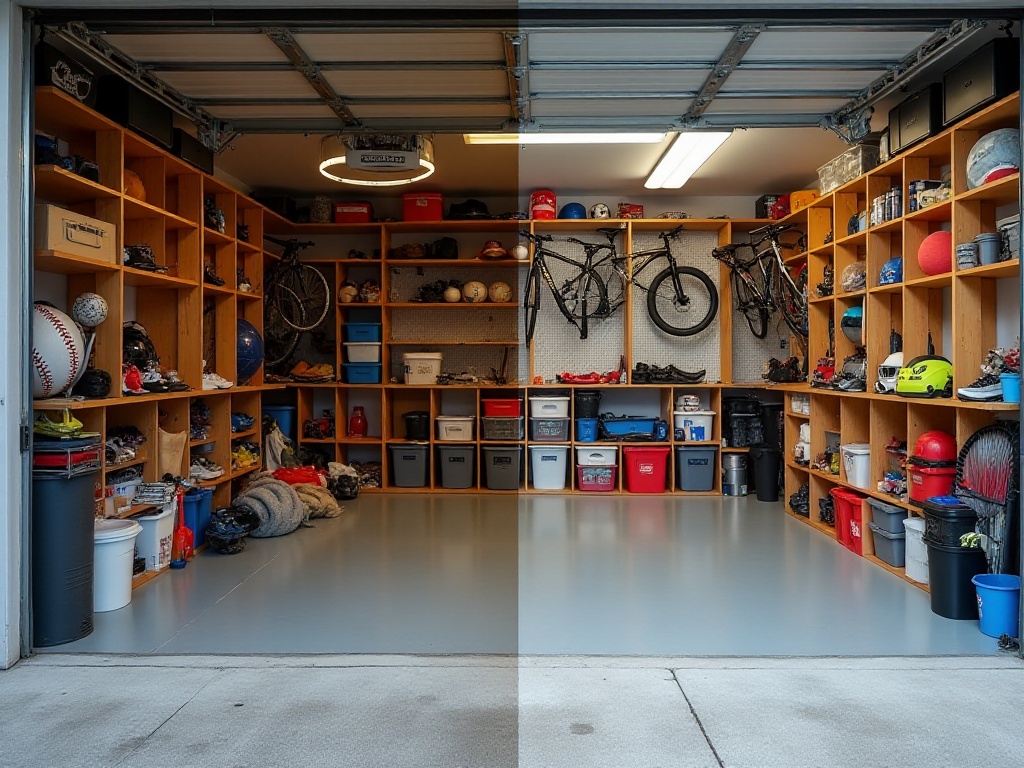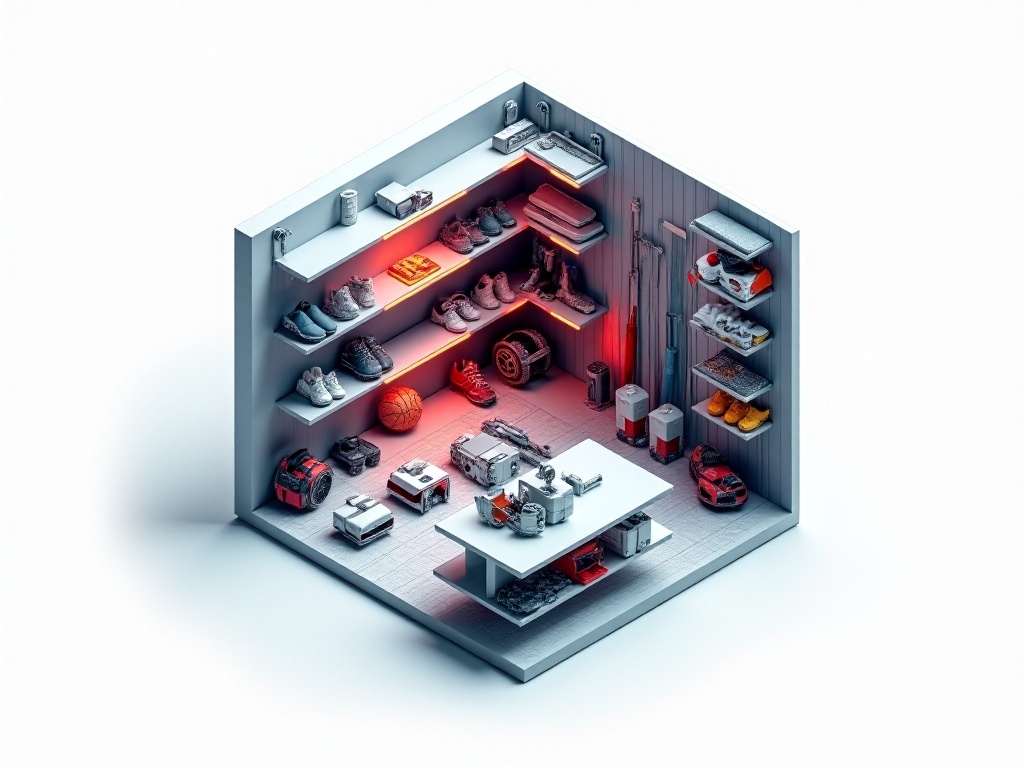Introduction
As a sports enthusiast, I deeply understand the frustration of organizing sports equipment. As sports activities increase, equipment tends to pile up unknowingly. Last month when I wanted to play badminton, it took forever to find my racket buried deep in the closet, only to discover it was covered in thick dust. The chaos of searching for equipment is really frustrating - it not only wastes time but also affects your workout mood. After years of trial and error, I've finally developed a set of practical organization methods, and today I'll share my experiences.
Making Use of Wall Space
To be honest, I used to be clueless about organization, thinking a cabinet would solve everything. Until one day, I realized my room was packed with cabinets yet still messy. Later at a home expo, I was deeply impressed by a sports equipment display wall, which made me realize that wall space is the most underestimated storage area.
To turn wall space into ideal storage, choosing the right hook system is crucial. There are numerous types of hooks available - specialized ones for bicycles, yoga mats, and even skateboard racks. After careful comparison, I chose an adjustable track hook system. The biggest advantage of this system is its flexibility - you can adjust hook positions and spacing according to different equipment sizes.
When installing hooks, weight capacity is critical. I recommend paying special attention to hook materials and maximum load capacity when purchasing. Don't choose inferior products to save money, as falling equipment can not only damage itself but also create safety hazards. I chose 304 stainless steel hooks with a 15kg load capacity per hook, which fully meets daily needs.
Besides basic hooks, I added some auxiliary storage accessories. For example, shelves with non-slip pads can securely hold round equipment like basketballs and soccer balls. I also installed storage boxes with lids to store small items that easily collect dust, like wristbands and knee pads.
What I'm most proud of is incorporating lighting into the wall storage system. By installing adjustable spotlights, the whole wall creates a display cabinet effect and makes it easy to find equipment. Every friend who visits is amazed by this "equipment wall" and wants to copy the idea.
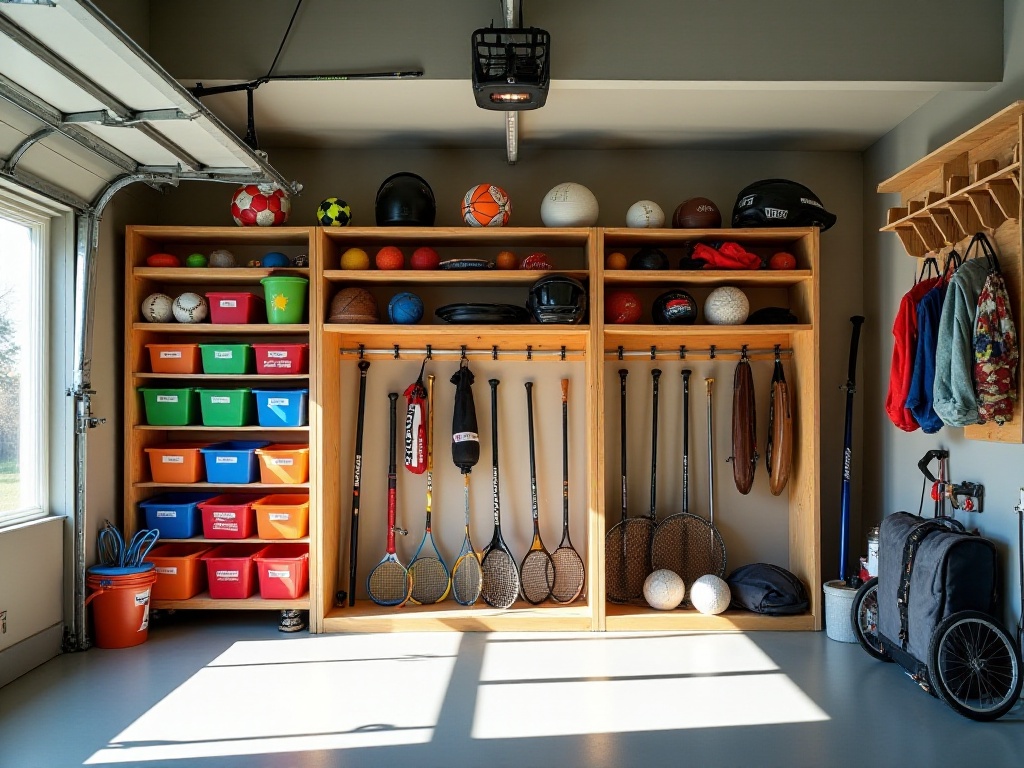
Overhead Storage
Speaking of innovative storage, I must mention my "overhead garden" project. I first got the idea while casually browsing foreign garage renovation cases online, and decided to apply this concept to storing sports equipment at home.
First, I had professionals assess the ceiling's load-bearing capacity. After confirming it could support a storage system, I began the renovation. I chose an electric sliding rail storage system that can be controlled by remote to move storage boxes up and down. The biggest advantage of this system is convenience - no ladder needed to access equipment.
To maximize space usage, I custom-ordered storage boxes of various sizes. The largest boxes store winter ski equipment, including snowboards, poles, and ski suits. Medium boxes hold surfboards and sailboards. Smaller boxes are specifically for various protective gear and accessories.
To prevent equipment from getting damp and moldy during long-term storage, I placed desiccants in each box and replace them regularly. Additionally, the boxes are made of transparent material, so you can easily see what's stored inside.
What makes me most proud is that this system not only solved storage issues but unexpectedly added a high-tech feel to the room. Every time friends visit and see me simply press the remote to lower the storage boxes, they're amazed.
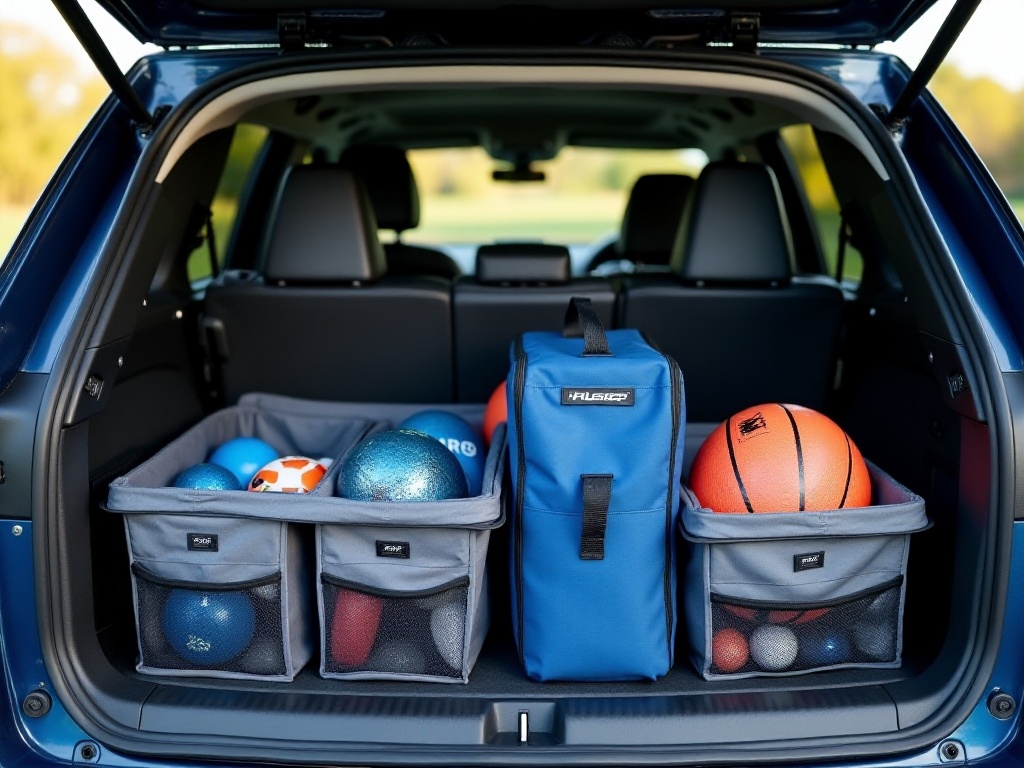
Detailed Classification
When it comes to classification storage, I have a complete theoretical system. After multiple attempts and improvements, I found the most effective way is to combine three dimensions: frequency of use, sport type, and seasonality.
First is dividing by frequency of use. I categorize all equipment into three levels: daily use, weekend use, and occasional use. For example, running gear I use daily, including running shoes, sports watch, and bluetooth earphones, is stored in a dedicated cabinet by the entrance for easy access. Basketball equipment used on weekends is displayed on the living room wall, both practical and aesthetic. Seasonal items like camping and skiing equipment are stored in the ceiling storage system.
For sport type classification, I use a color coding system. Each sport has its corresponding color label - orange for basketball, blue for swimming, purple for yoga, etc. This makes storage and retrieval very intuitive. I also labeled each storage box with corresponding colors and detailed item lists in marker.
To better manage this equipment, I created an electronic inventory using spreadsheets to record purchase date, usage frequency, maintenance cycle, and other information for each item. This helps track equipment condition and know when maintenance or replacement is needed.
For seasonal classification, I use a rotation system. For example, at the end of April, I thoroughly clean and store winter sports equipment while taking out and preparing summer sports equipment. This regular rotation not only extends equipment life but also prevents storage space waste.
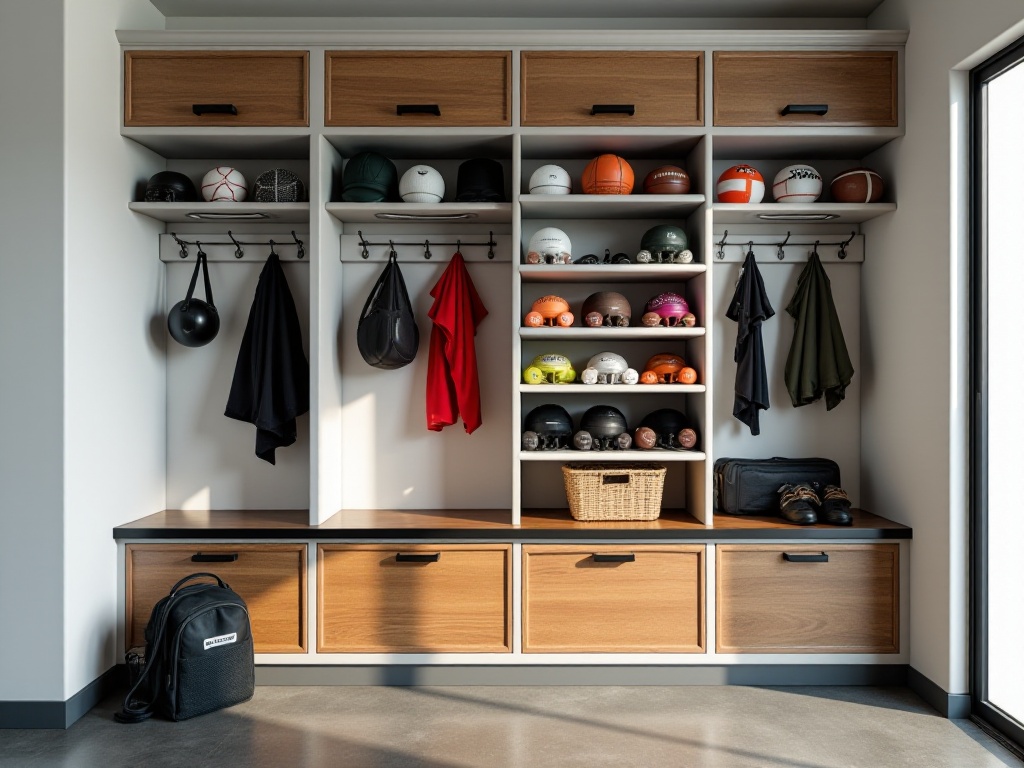
Portable Storage
For sports equipment that needs to be frequently taken out, I have a complete portable storage solution. First, I designated a "sports equipment prep area" in the garage with portable storage bags and folding boxes of different sizes.
Most frequently used is a 45L folding storage box that fits perfectly in my car trunk and is large enough to hold multiple types of equipment. I specifically chose a style with compartments that can be freely adjusted. For example, when playing ball, I separate shoes, change of clothes, and towels into different sections for convenience.
To avoid repacking equipment every time I go out, I prepared dedicated storage bags for different sports. The swim bag always has goggles, swim cap, slippers, and other essentials; the ball sports bag contains protective gear, towels, and energy supplements. These bags stay on shelves in the prep area, ready to grab and go.
When choosing storage bags, I particularly focus on practicality and durability. Waterproof materials are preferred so damp equipment won't leak through. The interior should have mesh pockets for ventilation. I also place small desiccant packets in each bag to prevent moisture and mold.
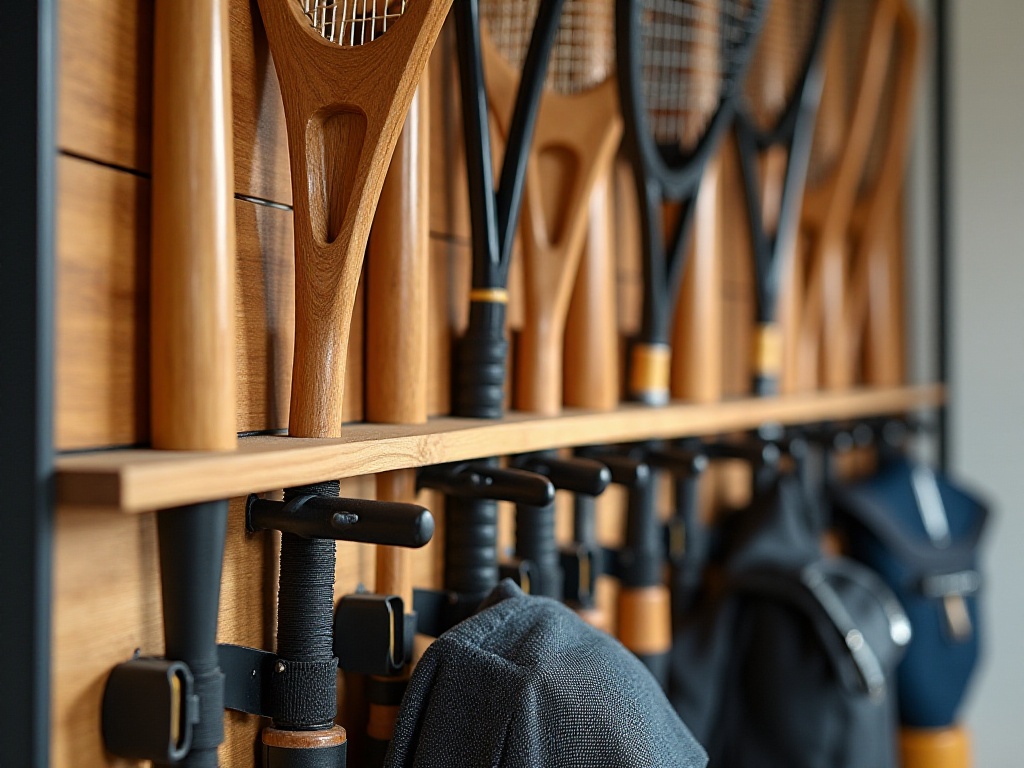
Odor Control and Maintenance
When it comes to storing sports equipment, odor control and maintenance are absolutely crucial. Sports equipment is most vulnerable to trapped sweat and mold - improper handling not only creates unpleasant odors but seriously affects equipment lifespan.
My odor control system has three levels: prevention, daily treatment, and deep deodorizing. For prevention, I installed small circulation fans in all storage areas to maintain air flow. I also placed activated charcoal deodorizing packets in enclosed storage spaces to effectively absorb odors.
Daily treatment focuses on frequently used equipment. After each workout, I immediately hang equipment on a specialized drying rack on the balcony. This custom rack includes UV sterilization to disinfect while drying. For equipment prone to odors, like athletic shoes, I use professional deodorizing spray.
Deep deodorizing involves periodic large-scale cleaning. At the end of each month, I thoroughly clean and deodorize all sports equipment. First, machine-washable items are washed, then other equipment is wiped with professional sports equipment cleaner. After cleaning, I sun all equipment for several hours - the most natural and effective deodorizing method.
For maintenance, I established corresponding care plans for different equipment. Leather items need regular leather care oil treatment, while metal equipment needs regular rust removal and oiling. I set maintenance reminders on my phone so I won't forget.
Final Thoughts
After this series of storage renovations, my sports space is completely transformed. Not only does each piece of equipment have its dedicated place, but finding things is much more efficient. Most importantly, this organized storage environment gives me great motivation to exercise.
Now every morning when I wake up and see the neatly arranged sports equipment, I naturally want to go work out. And after each workout, organizing equipment has become enjoyable. This positive cycle not only cultivated my organization habits but improved my quality of life.
Remember, good organization isn't just about tidiness - it's a tribute to an athletic lifestyle. When your sports equipment is displayed perfectly like artwork, you'll find that exercise has become an indispensable part of life.
I hope sharing these organization experiences helps more sports enthusiasts create their perfect workout space. After all, an organized sports space often brings sustained motivation and passion for exercise.


